Explore the Heart of Ancient China
Ni Hao, welcome to Beijing, the iconic city as well as the capital of China! You will be met by local tour guide at the arrival hall of Beijing Airport and escorted to check in your hotel in downtown by a private comfortable vehicle. The rest of today is on your own to relax. If you want to explore nearby, feel free to get some practical suggestions from your tour guide.
After breakfast, start to explore the historical face of Beijing with a brief visit to Tiananmen Square, now the largest city plaza in the world. Tiananmen Gate on the northern side of the square was the site where Chairman Mao announced the establishment of the People's Republic of China. Stepping into the Tiananmen, you will see one of the world’s five most important palaces – the Forbidden City, a huge palace complex of more than 9,000 rooms where 24 emperors of the Ming and Qing Dynasties lived. Pass through various doorways in this magnificent structure to admire the beautiful and well preserved buildings decorated with yellow-glazed tile roofs, white marble bases and splendid colorful paintings.
Next activity is to hop on a rickshaw to experience Beijing Hutongs – small alleys made of neighboring quadrangle dwellings. Shuttle among different Hutongs to feel the old Beijing life style, meet various antique shops and small boutiques, feel the historical changes of Beijing, also pay a visit to a local family’s home in the traditional Hutongs.
After lunch, drive to the outskirts of Beijing to spend an enjoyable time in the Summer Palace, the largest and best-preserved royal garden in China. Stroll around ancient pavilions, mansions, temples, bridges and corridors while feasting your eyes on the vast lotus in Kunming Lake and the colorful paintings in the Long Corridor.
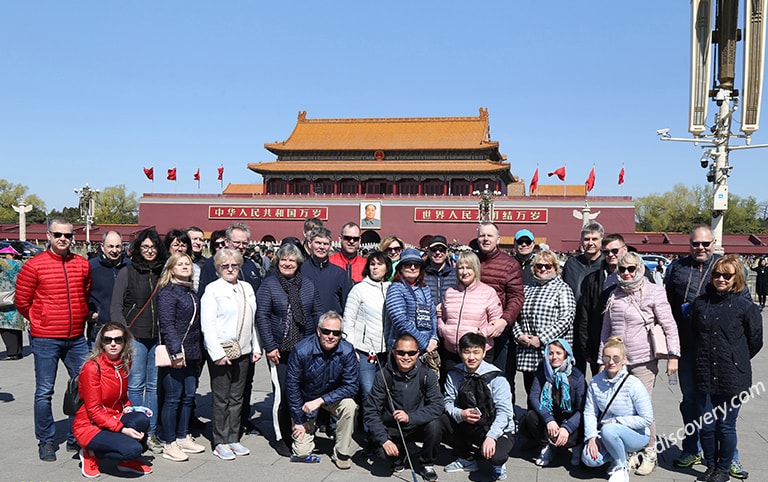 Woo's group visited Tiananmen Square
Woo's group visited Tiananmen Square
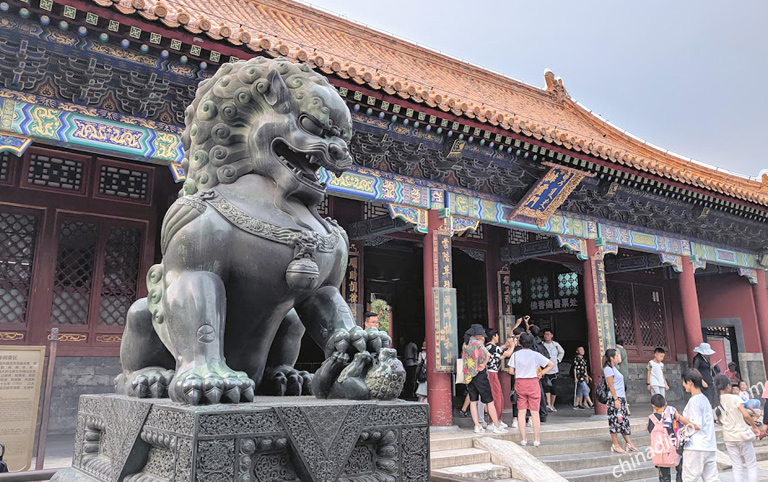 Forbidden City Photographed by Our Customer
Forbidden City Photographed by Our Customer
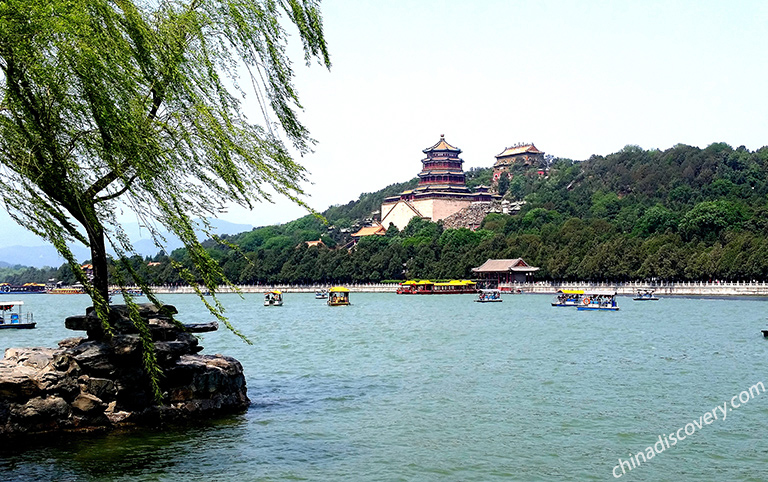 Summer Palace Shot by Our Guest Nguyen in 2017
Summer Palace Shot by Our Guest Nguyen in 2017
After breakfast, drive from your hotel to visit the imperial site – Temple of Heaven. It was originally used to pay homage to Heaven and pray for harvest, now becomes a bustling place for locals to take part in traditional activities, such as Tai Chi, dancing, kite flying, water calligraphy, etc.
The rest of today is to drive about 70km to witness one of the Seven Wonders of the World - the Great Wall. You will visit the Mutianyu, a less crowded yet well-preserved segment of the Great Wall built in the Ming Dynasty. It will more than live up to all of your expectations! This great wall, linking Gubeikou in the east and Juyongguan in the west, was served as the vital military strategic point in the ancient time. Moreover, Mutianyu section is the “longest great wall in China” so far and since protection work is well done here, tourists can now see its original appearance and enjoy the real ancient culture of great wall. Also, spectacular natural scenery in Mutianyu Great Wall always impresses visitors here for its abundant vegetation. You’ll take a cable car to ascend the Great Wall, then hike the most beautiful and interesting part of Mutianyu. It's a wonderful experience to climb up its rising towers to enjoy scenic views and take brag-worthy photos of the wall wriggling along mountain ridges. After the exciting time, descend Mutianyu Great Wall by cable car. (Note: If energy permits, you can hike up or down which takes about 40 minutes to climb steps. Please tell your likes to your travel consultant.)
After the Great Wall visit, drive back to Beijing city and take a short stop at the Beijing Olympic Village to see its famous Bird’s Nest and Water Cube from the outside.
Optional activity: After the whole day’s tour, treat yourself a great dinner to taste the famous Peking Roasted Duck at Quanjude.
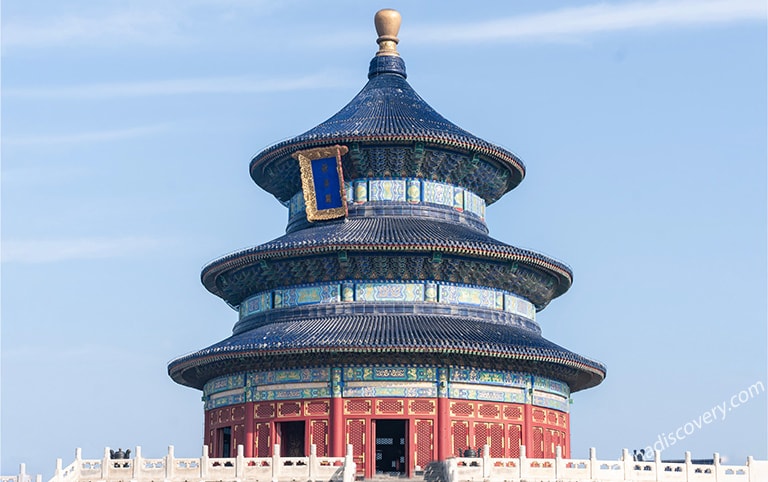 Temple of Heaven Shot by Our Customer Taylor
Temple of Heaven Shot by Our Customer Taylor
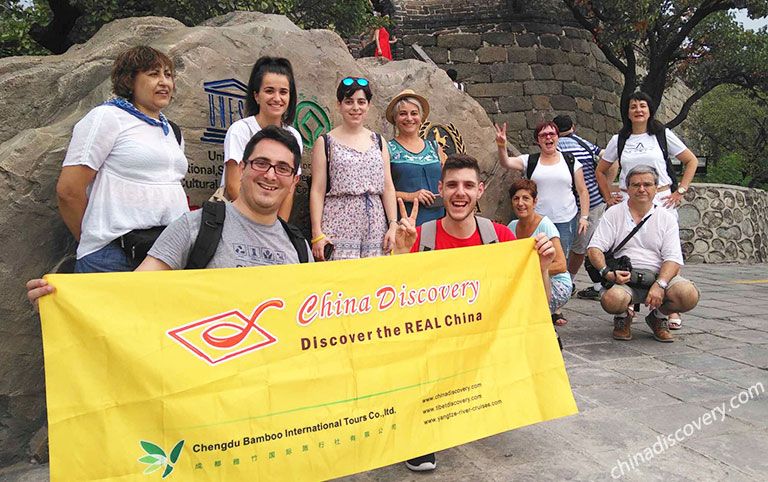 The Great Wall Family
The Great Wall Family
Get up early, you will be escorted to the train station and take a high speed bullet train to Datong from Beijing (about 2-2.5 hours). Upon arrival, be met by your local tour guide, and start to explore Datong highlights.
First site to visit is the famous Yungang Grottoes. Listed as World Heritage Site by UNESCO in 2001, Yungang Grottoes was built in Northern Wei Dynasty (368 - 534). Its Buddhist culture and art involve in architecture, history, music and other aspects of Chinese culture, representing the highest achievement in Buddhist art in 5th to 6th century as the essence of oriental sculpture art. Yungang Grottoes is one of the top three grottoes in China, along with Mogao Grottoes in Dunhuang and Longmen Grottoes in Luoyang. There are 45 major grottoes in total and 209 secondary caves, with about 1100 niches and 51000 statues. The biggest statue is 17 meters high and the smallest one is only 2 centimeters high.
After lunch, move on to Huayan Temple, the largest and best preserved monastery of the Liao dynasty, consisting of upper and lower parts. Later, continue to have a look at Nine Dragon Screen, the oldest and largest glazed screen in China. The dragons on the wall appear so vivid and marvelous that you cannot imagine they were built over 600 years ago.
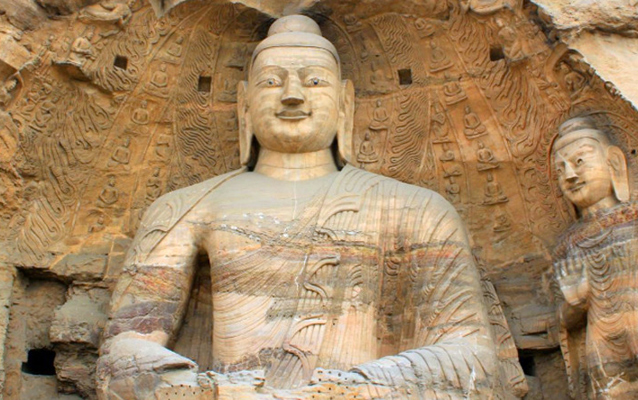 Yungang Grottoes - The treasure of traditional Chinese art
Yungang Grottoes - The treasure of traditional Chinese art
After breakfast, drive to visit the Hanging Temple, built on the cliffs of Mt. Hengshan, one of the five most sacred mountains in China. It is the only existing temple which combines Buddhism, Taoism and Confucianism together in China. The temple was constructed in the late Northern Wei Dynasty (491AD), protruding from the cliff of Cuiping Peak and is 50 meters above the ground. The Times magazine selected the Hanging Temple as one of the Top 10 Unique and Precipitous Architectures in 2010.
Then, moving on to the Yingxian Wooden Pagoda, the oldest preserving wooden Buddhist pagoda in China, which is only 50 km away from the Hanging Temple.
After the tour, drive to train station to catch your high speed train to Pingyao (about 2.5~3 hrs).
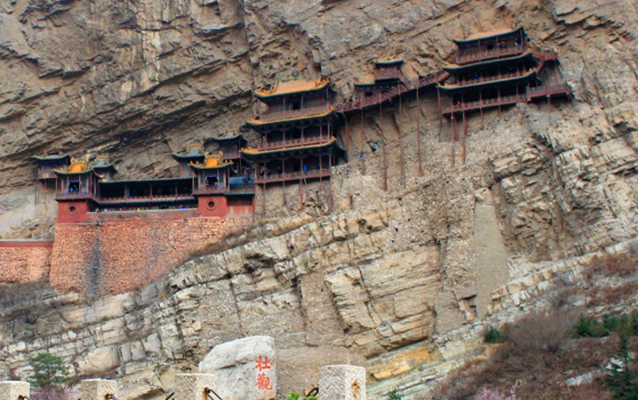 Hanging Temple at Mt. Hengshan
Hanging Temple at Mt. Hengshan
After breakfast, your guide will pick you up to start Pingyao Ancient City exploration. As one of the best-preserved ancient cities in China, Pingyao Ancient City is listed as a UNESCO World Cultural Heritage Site because of its brilliant cultural magnificence. With a history over 2700 years, Pingyao Ancient City still keeps its intact charm: ancient city walls, elegant courtyards, scattered temples, all reflecting the urban planning style between 1368 and 1911 during the Ming and Qing Dynasties. Your tour starts from the Ancient City Wall of Pingyao, where you can have a panorama view of the layout of this town. Then you will move on to the Rishengchang Former Bank, which shows you the original bank system in the past. Next, stroll on the traditional Ming and Qing Street, a cobbled road with old buildings on either side. It's much like tracing back to the former bustle bazaar in the old days. Later, visit the Temple of City God to appreciate the wonderful wood carvings, paintings and sculptures in the old temple.
After Pingyao Ancient City exploration, drive about 15 minutes to visit Shuanglin Temple, where you will be impressed by its large number of clay figures and wooden sculptures of various gods, goddesses and saints.
Return to your hotel after Shuanglin Temple visit.
Optional activity: Enjoy the excellent drama show of Another Glance at Pingyao (19:00~20:30) which presents local life, prosperity and recession of Pingyao during Qing dynasty vividly.
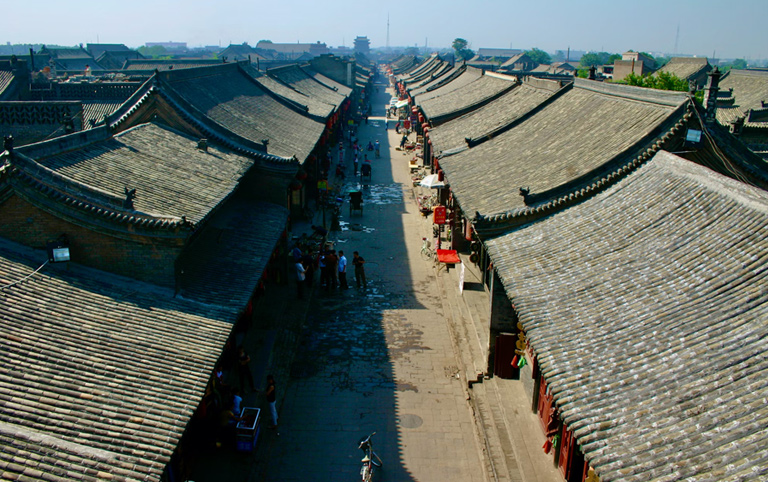 Old Streets of Pingyao Ancient City
Old Streets of Pingyao Ancient City
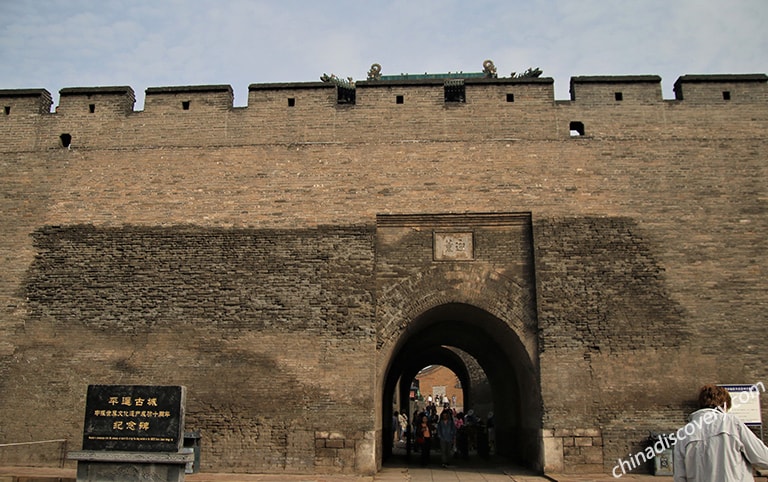 Pingyao Ancient City Wall Shot by Our Customer Elie
Pingyao Ancient City Wall Shot by Our Customer Elie
After breakfast, drive about 1 hour to Zhangbi Ancient Castle, which is a series of tunnels dug to hide out in times of war in over 1380 years ago. You will be amazed by the fabulous feat of architecture and engineering in ancient time.
Later, move to Wang's Family Compound which is reputed as an art museum of traditional Chinese architecture and “Forbidden City in Folk”. It is a building complex of multi-generation endeavor of Jingsheng Wang family through the Ming and Qing dynasties for more than 300 years, including five lanes and 6 forts and 231 courtyards, 2,078 rooms and a street with a total area of 250,000 square meters. Within the courtyards are rooms, kitchens, schools, and prayer pavilions. The architectural layout of the Wang Family Compound inherits the courtyard style formed in the Western Zhou Dynasty (1046 BC~771 BC) – halls in front and bedroom at back which not only provides enough space for social activities, but also satisfies the requirements of the family privacy. Young and orderly, men and women, hosts and workers are accommodated in different areas, which fully reflects the majesty of the official family and the regularity of the patriarchal etiquette in ancient China.
After the tour, transfer to the train station to take a high speed train to Xian. Upon arrival at Xian, be transferred to check in to your hotel. The rest time is free for you to relax.
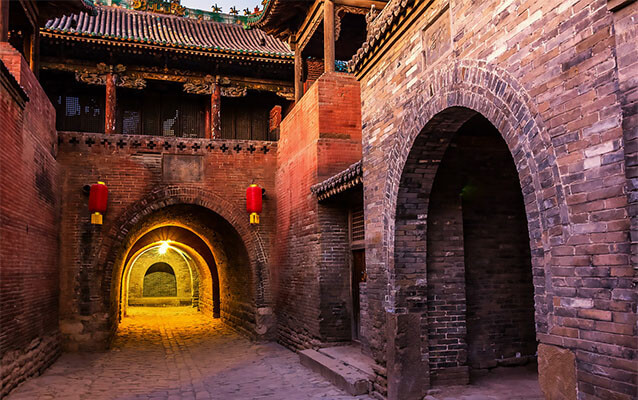 Zhangbi Ancient Castle
Zhangbi Ancient Castle
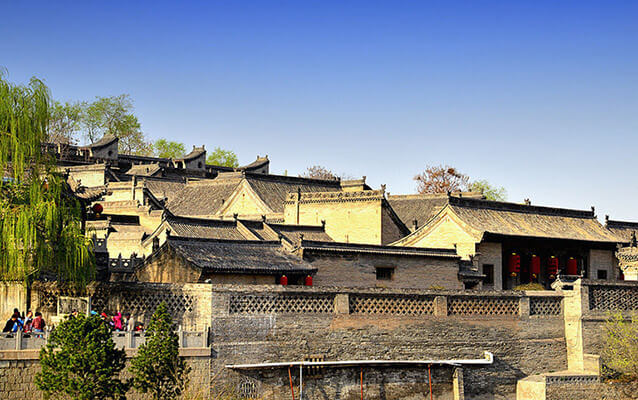 Wang's Family Compound
Wang's Family Compound
After breakfast, drive about 40km to discover one of the greatest man-made wonders in the world – Terracotta Warriors and Horses, built by the first emperor Qin Shihuang to protect his afterlife. Over 8, 000 life-size warriors, horses and chariots, buried in 3 pits more than 2000 years until uncovered by local farmer in 1974, forms an ancient military army with complete battle unites, such as infantry, cavalry, etc. Standing in front of these figures, one can’t help being amazed not only by the ambition of Qin Shihuang but also the fabulous artistic skills of ancient Chinese artisans.
After lunch, return back to Xian to take a wonderful stroll on the Ancient City Wall, the largest and best-preserved ancient city wall in China. Enjoy panoramic views of modern Xian and walk leisurely on the well-maintained city wall which is 12 meters high and 18 meters wide with a total circle of nearly 14 kilometers. It is followed by a relaxing wandering around bustling and lively Muslim Community, where you can taste the most delicious Xian food and various snacks, as well as experience local culture.
Optional activities: 1). Take a relaxing cycling on the Ancient City Wall; 2). Enjoy a wonderful Tang Palace Dance Show after a hearty dumpling dinner.
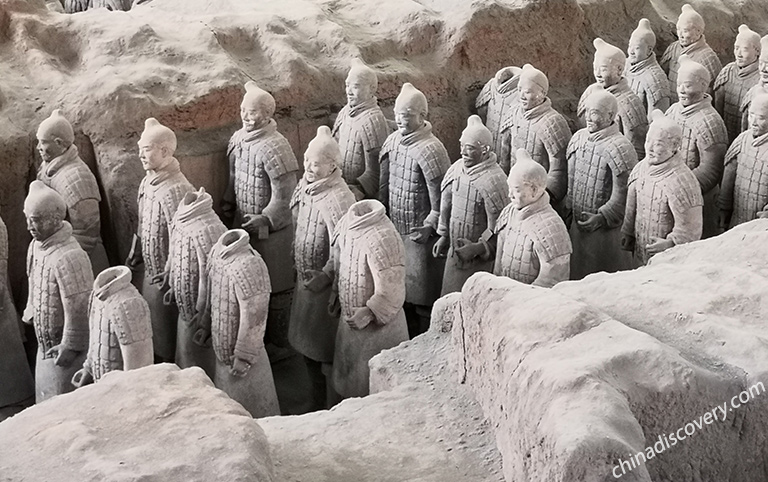 Terracotta Warriors
Terracotta Warriors
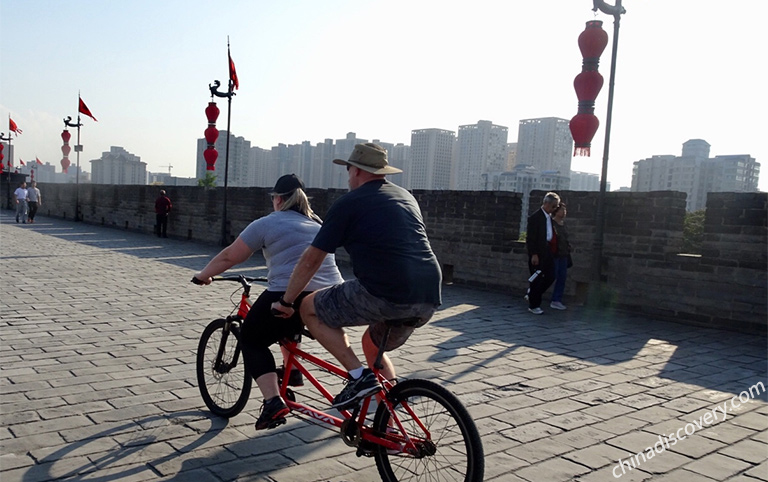 Our customers enjoyed biking on Ancient City Wall
Our customers enjoyed biking on Ancient City Wall
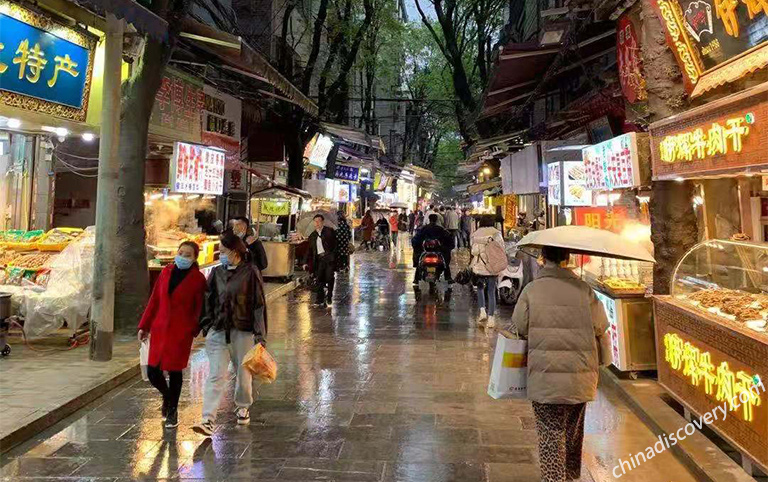 Muslim Community
Muslim Community
After breakfast, head to Da Cien Temple, a famous Buddhist sutra translation place in Tang Dynasty. Big Wild Goose Pagoda is the most famous building in the temple. With a height of 64.5 meters, the pagoda was built by the famous Buddhist master Xuanzang to reserve classic scriptures he bought from India in early Tang Dynasty. (Xuanzang, the prototype character of Tang Seng in the novel of Journey to the West). (Note: It charges extra 30 RMB to climb up the Big Wild Goose Pagoda)
Following is an educational visiting to Shaanxi History Museum. Ramble in the modern exhibition halls to appreciate relics, such as porcelains, paintings, currencies from Zhou to the Tang periods (1100BC to 907 AD).
The rest of today is free for you until get escorted to catch your flight/train to next destination. Tour ends.
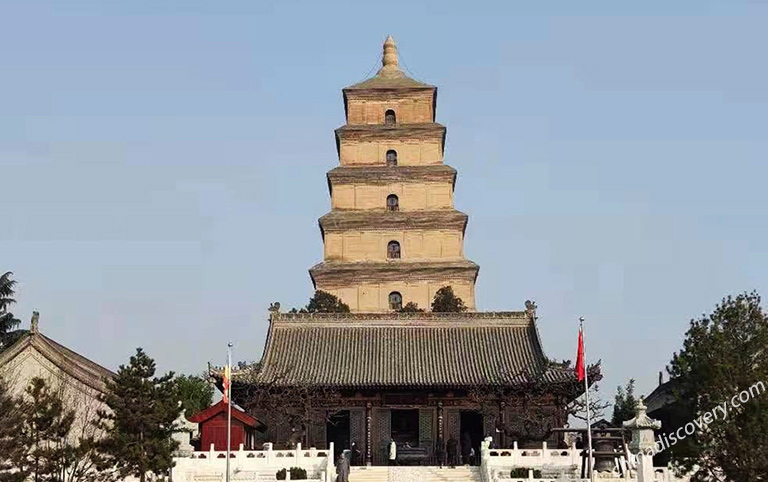 Big Wild Goose Pagoda shared by Our Customer
Big Wild Goose Pagoda shared by Our Customer
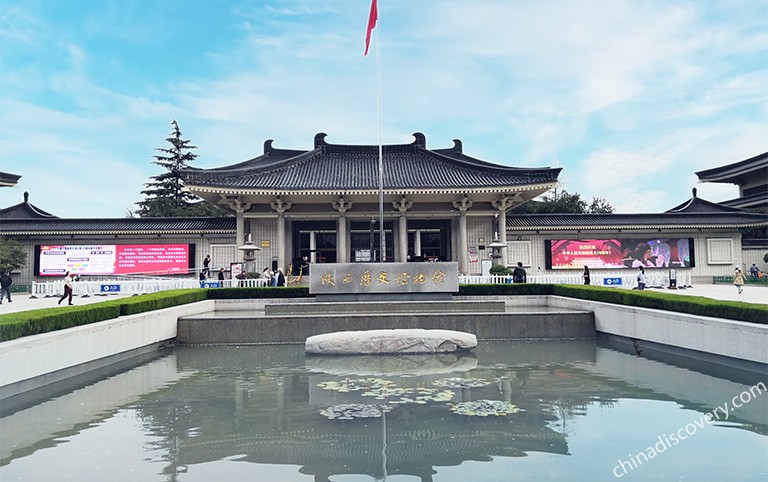 Our customers' group visited Xian Shaanxi History Museum
Our customers' group visited Xian Shaanxi History Museum
No documents found.
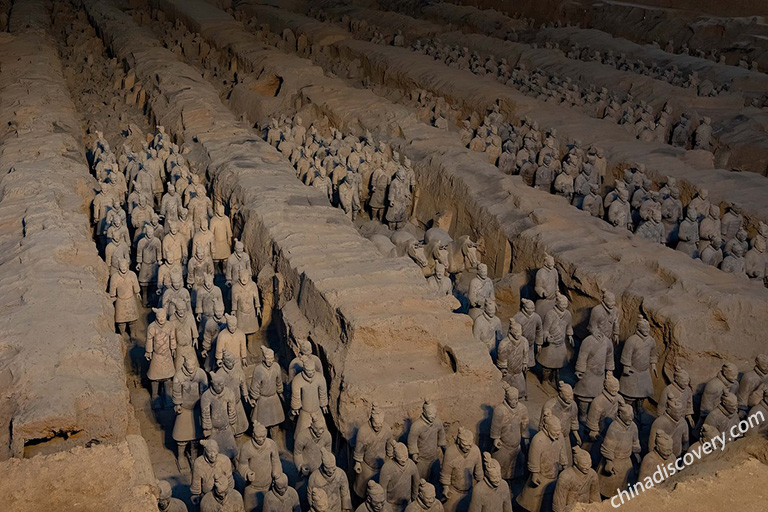
Beijing / Xian / Guilin / Shanghai
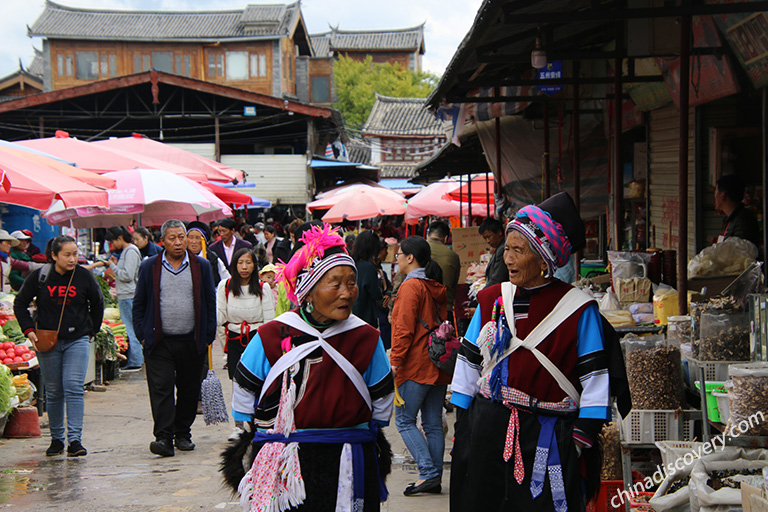
Shanghai / Kunming / Lijiang / Shangri la / Xian / Beijing
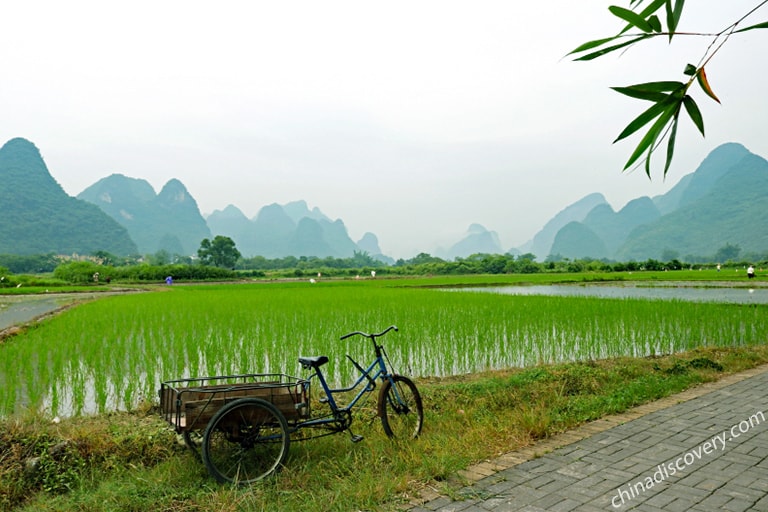
Beijing / Guilin / Shanghai / Huangshan / Shanghai